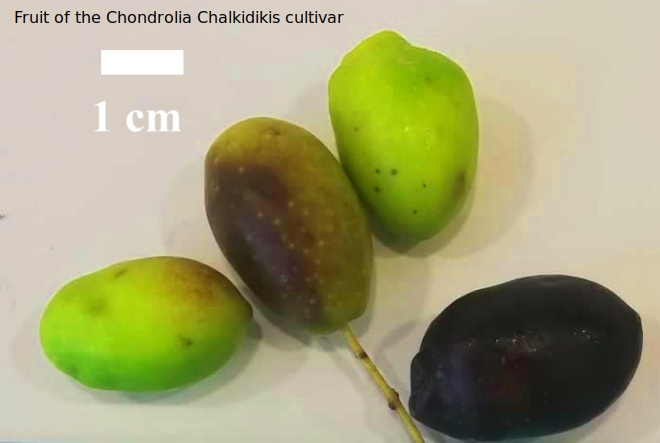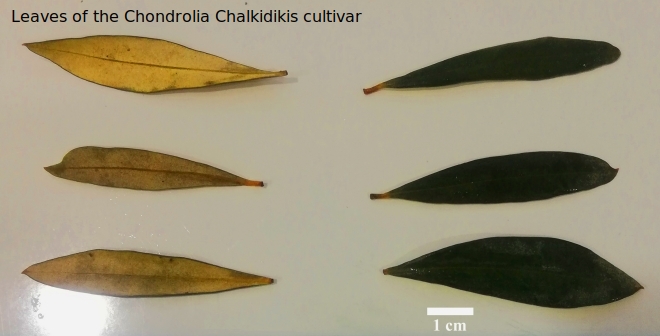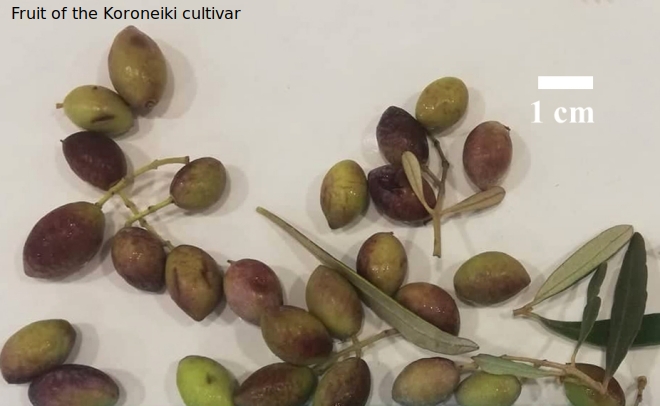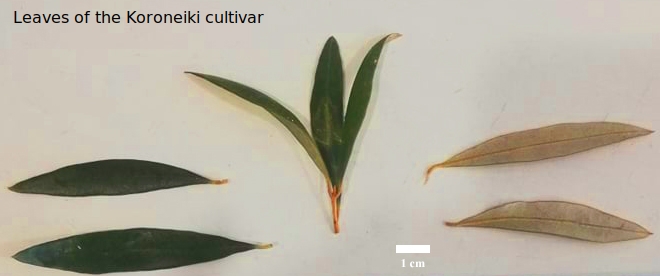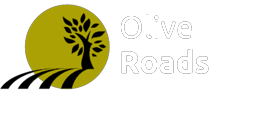Main menu
You are here
Cultivars
Olea europaea - Chondrolia Chalkidikis
The olive tree cultivar “Chondrolia Chalkidikis” is of medium hardiness and has large-sized drupes (4–14 g), elongated with a prominent tip at the end. Although it is dual purposed, it is mainly used for table olives, accounting for more than 50% (about 90–100,000 tons) of total national production in Greece. It is quite productive, partially self-compatible, requiring lower temperatures for flowering, resistant to average cold, sensitive to Cycloconium oleaginum, cancer, Verticillium diseases, and insects attack. Its olives are hand-picked from trees while still green, so harvest begins earlier (middle September–middle October) compared to other cultivars in neighboring areas. It is related to 16–20% oil yields and high-quality products.
Olea europaea - Koroneiki
The Koroneiki is an olive cultivar from Greece primarily used in olive oil production. After the Arbequina and Arbosana, Koroneiki olives are among the most common and suitable for high density growing systems around the world. The most common variety for oil production, Koroneiki olives cover 50-60% of the acreage in Greece1. The Koroneiki olive tree was originally cultivated in the semi-mountainous areas of the western Peloponnese but today we find Koroneiki olive trees also in Italy and in other countries of the world2.
